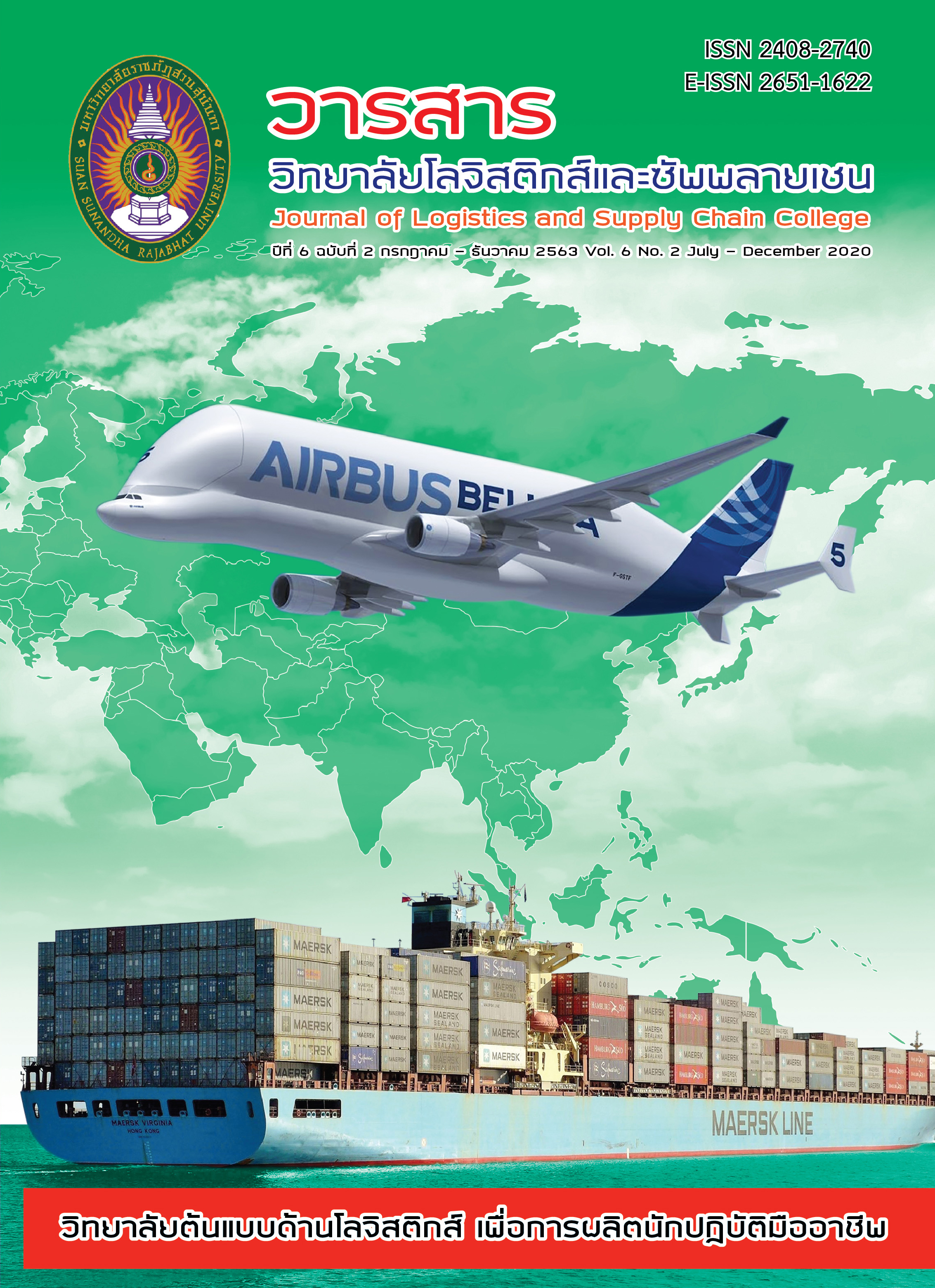Customer-Contact Business Strategies Affecting Organizational Reputation of Airline Businesses in Thailand 4.0
Abstract
The research aimed to investigate the effect of customer-contact business strategies on organizational reputation of airline business in Thailand 4.0. The samples were of 350 customers residing in Bangkok and Metropolitan area and used to use services from airline businesses in Thailand. The questionnaires were used to collect the data with the purposive sampling and convenient sampling methods. Data analysis consisted of descriptive statistics including frequency, percentage, mean and standard deviation and inferential statistics including structural equation model (SEM). The results showed that personnel strategy had a direct effect on marketing strategy and customer experience building strategy, and an indirect effect on organization reputation with standardized coefficient as of 0.790, 0.557, and 0.605. The marketing strategy had a direct effect on customer experience building strategy and organization reputation with standardized coefficient as of 0.352 and 0.321, respectively. Lastly, the customer experience building strategy had a direct effect on organization reputation with standardized coefficient as of 0.283 at the significant level as of 0.001. The study results can contribute managerial implications in developing personnel strategy, marketing strategy, and customer experience to create the organization reputation in era of Thailand 4.0.
References
Abdelhady, M. R. R., Fayed, H. A. K., & Fawzy, N. M. (2019). The Influence of Airlines' Marketing Mix Elements on Passengers' Purchasing Decision-Making: The Case of FSCs and LCCs. International Journal of Hospitality & Tourism Systems, 12(2).1-16.
Ban, H. J., & Kim, H. S. (2019). Understanding customer experience and satisfaction through airline passengers’ online review. Sustainability, 11(15), 4066.
Baruch, Y. (1999). Response rate in academic studies-A comparative analysis. Human relations, 52(4), 421-438.
Cochran, W. G., & William, G. (1977). Sampling Techniques. New York: John Wiley& Sons.
Ejem, E. A., Dike, D. N., Okoroji, L. I., & Igboanusi, C. (2016). Exploratory factor analysis of human resources management strategies in the nigerian airline industry. International Journal of Research in management, Sicence & Technology, 5(1), 128-136.
Enz, C. A. (2002). From the Executive Director: Promoting the human spirit: Key to business success. Cornell Hospitality Quarterly, 43(4), 1.
Hajiar, S. T. (2014). A statistical study to develop a reliable scale to evaluate instructors within higher institution. WSEAS Transactions on Mathematics, 13, 885-894.
Hapsari, R., Clemes, M., & Dean, D. (2016). The mediating role of perceived value on the relationship between service quality and customer satisfaction: Evidence from Indonesian airline passengers. Procedia Economics and Finance, 35(12), 388-95.
Hooper, D., Coughlan, J., & Mullen, M. R. (2008). Structural equation modelling: Guidelines for determining model fit. Electronic journal of business research methods, 6(1), 53-60.
Judge, T. A., Thoresen, C. J., Bono, J. E., & Patton, G. K. (2001). The job satisfaction–job performance relationship: A qualitative and quantitative review. Psychological bulletin, 127(3), 376.
Mellat-Parast, M., Golmohammadi, D., McFadden, K. L., & Miller, J. W. (2015). Linking business strategy to service failures and financial performance: Empirical evidence from the US domestic airline industry. Journal of Operations Management, 38, 14-24.
Nikbin, D., Ismail, I., Marimuthu, M., & Abu‐Jarad, I. Y. (2011). The impact of firm reputation on customers’ responses to service failure: the role of failure attributions. Business Strategy Series, 12(1). 19-29.
Nulty, D. D. (2008). The adequacy of response rates to online and paper surveys: what can be done?. Assessment & evaluation in higher education, 33(3), 301-314.
Seo, E. J., & Park, J. W. (2017). A study on the impact of airline corporate reputation on brand loyalty. International Business Research, 10(1), 59-67.
Solimun, S. and Fernandes, A. A. R. (2018). The mediation effect of customer satisfaction in the relationship between service quality, service orientation, and marketing mix strategy to customer loyalty. Journal of Management Development, 37(1), 76-87.
Sukortpromme, S., Onputtha, S., & Jotikasthira, C. (2019). The Effect of Employee’s Knowledge Learning, Knowledge Sharing and Working Skill on Employee Value in Anonymous Tire Manufacturing Company, International Journal of Applied Computer Technology and Information Systems, 9(1), 29-37
Siljaru, T. (2012). Research and data analysis with SPSS and AMOS. Nonthaburi: S.R. Print and Mass Production.
Tabachnick, B. G., & Linda S. F. (2001). Principal components and factor analysis. Using multivariate statistics, 4, 582-633.
Tilley, S., & Houston, D. (2016). The gender turnaround: Young women now travelling more than young men. Journal of Transport Geography, 54, 349-358.
Tiwasing, A, Onputtha, S., & Boonrin, C. (2019). Relationship of Customer’s Behavior and Service Innovation on Customer Satisfaction towards Low-Cost Airline Business: A Case of Thai Air-Asia. Proceeding of The 15th National Conference and 2019-1 International Conference on Applied Computer Technology and Information Systems, and 2019-1 National Conference on Business Administration, 513-519.
Walsh, G., Dinnie, K., & Wiedmann, K. P. (2006). How do corporate reputation and customer satisfaction impact customer defection? A study of private energy customers in Germany. Journal of Services Marketing, 20(6), 412-420.
Wheaton, B., Muthen, B., Alwin, D. F., & Summers, G. F. (1977). Assessing reliability and stability in panel models. Sociological methodology, 8, 84-136.



